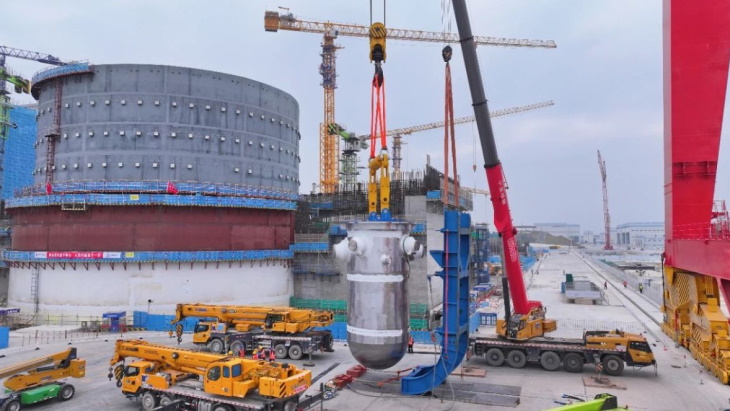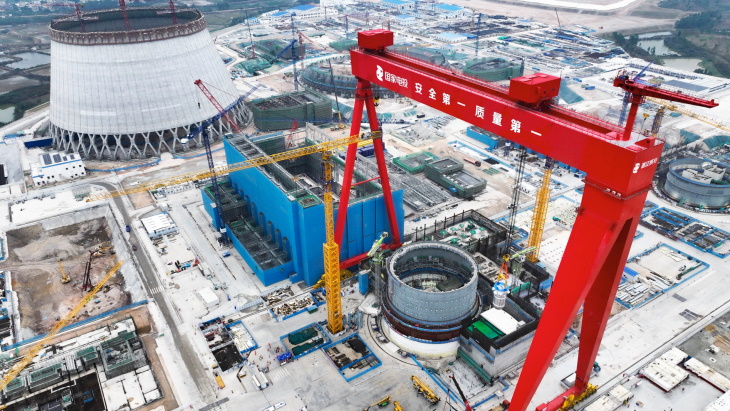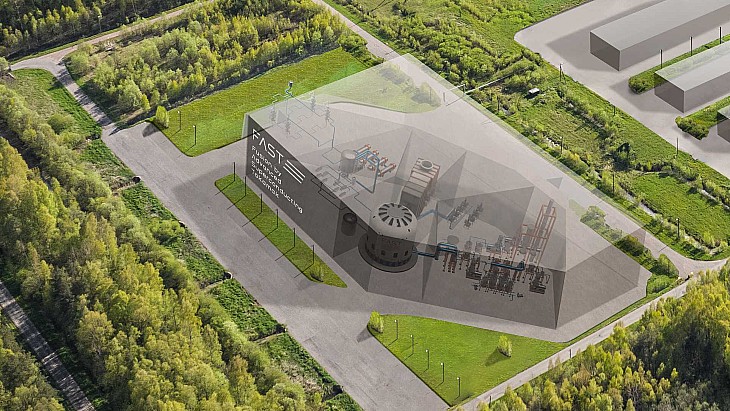The vessel - which will house the nuclear reactor and is the core of a nuclear power plant - was manufactured by Shanghai Electric Nuclear Power Group and was delivered to the Lianjiang site on 13 February.
With a net weight of about 271 tonnes, the vessel was hoisted into place on 27 February, the Shanghai Nuclear Engineering Research and Design Institute (SNERDI) announced. It noted that during the preliminary preparations for this hoisting, the integrated installation technology for the reactor pressure vessel shell insulation was used for the first time. This, it said, "effectively reduced on-site cross-construction, greatly improved construction efficiency, and provided new technical ideas and reference solutions for the construction of nuclear power projects".

(Image: SNERDI)
SNERDI - a subsidiary of State Power Investment Corp (SPIC) - said that installation of the vessel marks "the beginning of the installation of the main system equipment of the nuclear island and laying a solid foundation for the subsequent main pipeline installation".
The construction of the first two 1250 MWe CAP1000 reactors - the Chinese version of the Westinghouse AP1000 - at the Lianjiang site was approved by China's State Council in September 2022. Excavation works for the units began in the same month, with the pouring of first concrete for the foundation of unit 1 starting in September 2023 and that of unit 2 in April last year. Unit 1 is expected to be completed and put into operation in 2028.

(Image: SNERDI)
Once all six CAP1000 units planned at the site are completed, the annual power generation will be about 70.2 TWh, which will reduce standard coal consumption by more than 20 million tonnes, and reduce carbon dioxide emissions by more than 52 million tonnes, sulphur dioxide by about 171,000 tonnes and nitrogen oxides by about 149,000 tonnes.
SPIC says the Lianjiang plant will be the first nuclear power project in China to adopt seawater secondary circulation cooling technology as well as the first to use a super-large cooling tower.

_72820.jpg)



_82983.jpg)
_34792.jpg)
_16403_79272.jpg)


_76087_55556.jpg)



